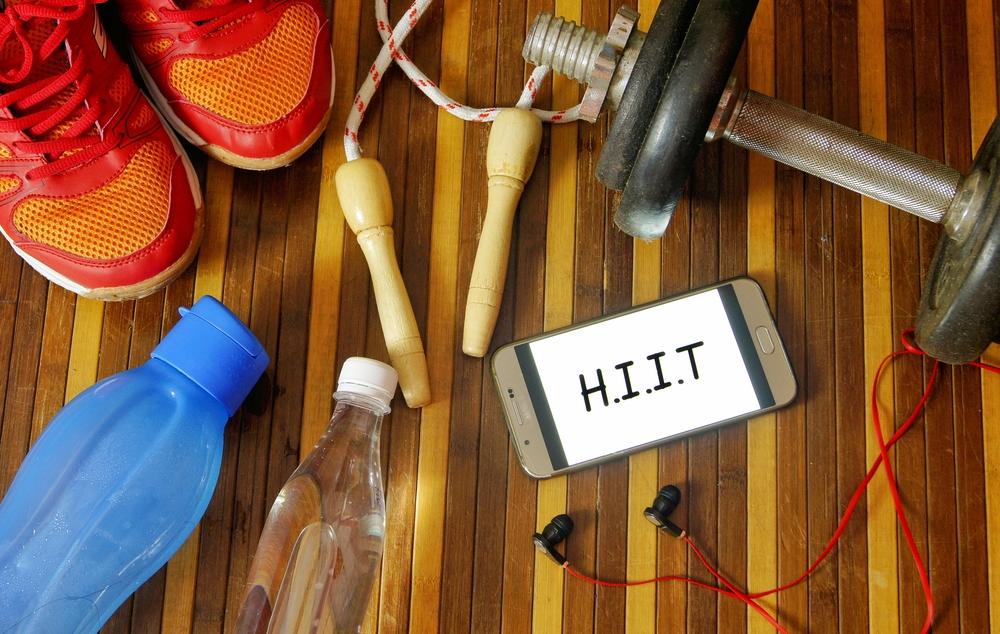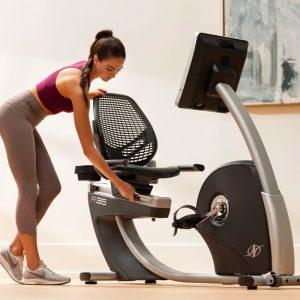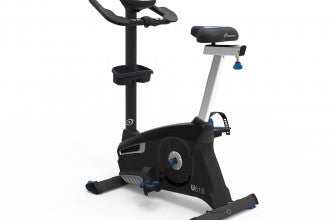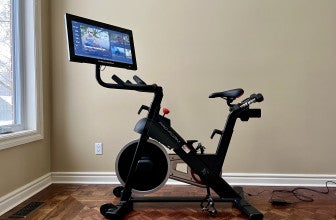Want to get in shape while using your bike? If so, a HIIT bike workout is what you need to be doing. Few things are going to be more beneficial for the body than high intensity interval training, which is why so many people are hopping on this bandwagon.
With this style of training, you can experience:
- An improved resting metabolic rate
- Accelerated rates of fat burning all day long
- Increased lean muscle mass tissue
- Improved strength and power output
- Lower resting heart rate (and lower blood pressure)
- Improved heart health
- Increased cardiovascular endurance (that’s right! You don’t necessarily have to do endurance training to increase your physical fitness endurance levels)
We’re seeing HIIT routines creeping up everywhere and are being done by people of all ages, shapes, and sizes because of all these great benefits they offer. One thing is certain though: this is not a routine for a beginner. It is quite intense, so you’ll want to ensure that you do have some experience under your belt or you may find yourself quickly injured (or just burned out from it all!). If you are not able to do 30 minutes straight of cycling right now, you should work up to that first and then progress into HIIT biking from there.
So what do you need to know to get started with a HIIT bike workout? Let’s go over a few of the key points to know and remember.
Start SLOW
As just noted in the introduction, first thing to know to properly begin to do a HIIT cycling workout session is that you should never rush into it. Meaning, don’t dive in and do three workouts a week at max speed.
If this is your first time ever doing HIIT on a bike, you need to let your body adjust and adapt. Give it time to learn the ropes, so to speak, so you don’t wind up sore or injured.
Taking an extra three weeks or so to ramp up to full blown HIIT training is a much smarter strategy than risking an injury and winding up sidelined for six weeks instead.
You should focus on doing moderate paced intervals for the first couple sessions and then add more intensity and/or duration after that.
Do keep in mind though that these should never be long workouts anyway. You should be looking at no more than 15-20 minutes per session.
Do Your Warm-Ups
Next on the list is your warm-up. It’s important that you are taking the time to warm-up as that is going to be what gives you the best chance at doing the most HIIT cycling workout possible.
A warm-up will both decrease your risk of injury and help get blood flowing to the muscle tissues, which then is what will help boost your overall strength output higher.
Your warm-up should ideally consist of some range of motion exercises and then some light cardio training to help get your heart rate up.
Note: this should not turn into a full-blown workout in itself. It’s meant to energize you for the coming HIIT biking not tire you out. Usually it will also take place on the bike as well and will consist of about 5-10 minutes of light cycling.
Choose Your Interval Length
The next important thing to consider when designing a HIIT spin bike workout session is the interval length. Here you do have some choices. Some people like to perform very short intervals of about 15-20 seconds in length while other people prefer doing longer intervals of around 45-60 seconds in length.
Note that the overall intensity in which you do the intervals with will depend upon the length of that interval.
Think of it this way: if you only have to exercise for 15 seconds, you can exercise harder than if you had to exercise for 60 seconds straight, right?
So this is why you will need to push harder the shorter your intervals are. This doesn’t mean that 60 second intervals should feel easy. In fact, if you are doing things properly, they should feel just as challenging as the short intervals, just in a slightly different way.
Sixty second intervals would be great for someone who is looking to build anaerobic endurance (the ability to maintain intense exercise for an extended period of time), while 15 second intervals are good for those who are hoping to develop maximum power and want to be able to push their body to the very limit of what it can do.
So think about your overall goals and then select your interval length from there. Know that you don’t necessarily have to always do the same interval length either. In fact, changing it up can be a great idea as it’ll help prevent your body from becoming bored and also help to provide a more well-rounded overall training stimulus.
Another thing to keep in mind with this is that the rest periods will also vary. You’ll typically need more rest in proportion to the interval length when doing short intervals. So for instance, if you are working for 15 seconds, you might need 45 seconds of recovery time between bouts of exercise because it was so intense. You need that extra time to recover so a 1:3 ratio is a good place to be.
If you were doing 60 second interval lengths, most people can use 60 second recovery periods and do just fine. This illustrates the difference in types of fatigue states that you encounter depending on the duration of that interval.
Keep Your Breathing Regulated
One of the biggest mistakes people make when they begin their cycling HIIT training is that they hold their breath during every interval.
Usually when things get really hard physically, it’s a normal reaction to hold your breath. Just like it is when you are stretching as well.
If you’re ever stretching and then all of a sudden you feel tight and tense, you will hold your breath and tighten up, which is actually the exact opposite of what you want to do.
The same applies to your HIIT exercise bike workouts. If you hold your breath, then no oxygen is getting to the working muscle tissues. This only increases the rate in which lactic acid build-up occurs and you eventually stop that workout session entirely.
If you are just doing a 15 second interval, this may be okay, but if you’re going for longer, you’re going to need to breathe.
It is hard and takes some work, but if you can focus on breathing in and out regularly, you will ensure that you putting your best foot forward to maximize your performance.
Add Additional Workouts
After you have your bike HIIT sessions in place, then add in some other workout sessions as well. You should never just be doing HIIT workouts. You need variety in your workout routine as well and some lower intensity sessions. This could be steady state workouts or doing some light yoga training for example.
Beginners should do HIIT biking no more than 1-2 times per week, intermediate trainees, 2-3 times per week, and advanced individuals, 3-4 times per week. Your body does require time off to recover from such sessions and failing to give it this time will just leave you regressing rather than progressing.
So there you have the main points to know about HIIT on a stationary bike. The following are two examples of HIIT that you can follow along with. Note that they work off a rate of perceived exertion scale (RPE) on a scale from 1 to 10. One being sitting and 10 being the most intense exercise you can imagine doing.
HIIT Spinning Workout 1
5-minute warm-up light cycling RPE 3
60 seconds RPE 7
60 seconds RPE 3
60 seconds RPE 8
60 seconds RPE 3
60 seconds RPE 8
60 seconds RPE 3
60 seconds RPE 8
60 seconds RPE 3
60 seconds RPE 8
60 seconds RPE 3
60 seconds RPE 7
60 seconds RPE 3
60 seconds RPE 6
60 seconds RPE 3
5 minute cool-down
Stretching
Cycling HIIT
5 minute warm-up light cycling RPE 3
15 seconds RPE 7
45 seconds RPE 2
15 seconds RPE 8
45 seconds RPE 2
15 seconds RPE 9
45 seconds RPE 2
15 seconds RPE 9
45 seconds RPE 2
15 seconds RPE 9
45 seconds RPE 2
15 seconds RPE 9
45 seconds RPE 2
15 seconds RPE 9
45 seconds RPE 2
15 seconds RPE 9
45 seconds RPE 2
15 seconds RPE 9
45 seconds RPE 2
15 seconds RPE 8
45 seconds RPE 2
5 minute cool-down
Stretching
So give some bike HIIT a try. It is a great way to improve your fitness level and completely change your body when done right and in a safe and effective manner.





